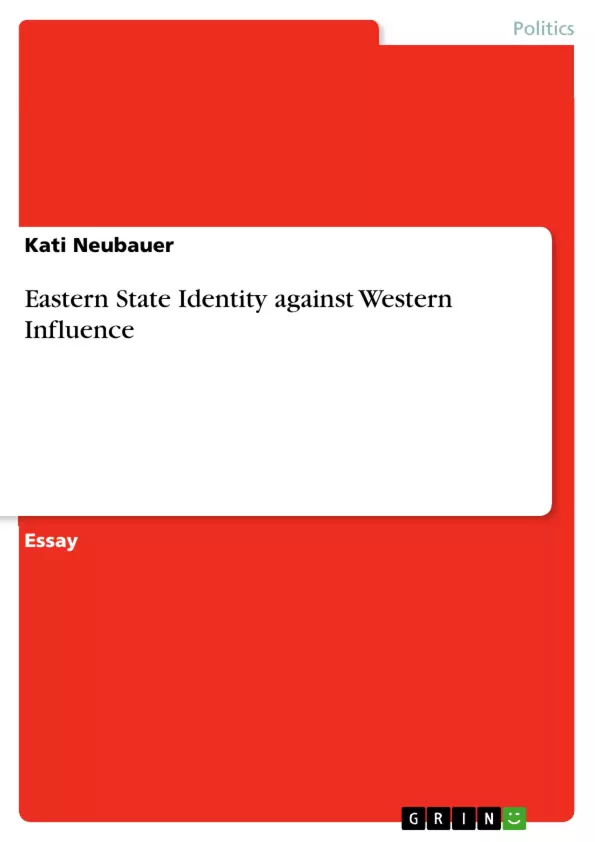With the struggle for independence many states in the modern Middle East found themselves confronted with the challenge of the establishment of an own identity based on a long history, unifying events and shared values. Therefore, influence which was understood to be suppressive and foreign was fought. This essay gives a closer look at the strategies and ideologies Iran and Egypt used in particular to resist foreign powers in order to establish a stable state.
Inhaltsverzeichnis (Table of Contents)
- Eastern State Identity against Western Influence
- Iran
- Western Influence in Iran
- The Islamic Revolution
- Egypt
- Egyptian Independence and Nasser's Rule
- Pan-Arabism and the Suez Canal
- Nasser's Legacy
- Conclusion
Zielsetzung und Themenschwerpunkte (Objectives and Key Themes)
This essay aims to examine the strategies and ideologies employed by Iran and Egypt in their resistance against foreign powers, specifically western influences, during their pursuit of establishing stable and independent states. * **The impact of Western influence on Middle Eastern states** * **Nationalist movements and the fight for independence** * **The role of religion and ideology in state formation** * **Economic dependence and the struggle for control over resources** * **The complex relationship between Eastern and Western powers**Zusammenfassung der Kapitel (Chapter Summaries)
Iran
- This section explores the history of western influence in Iran, focusing on the role of the British-dominated Anglo-Iranian Oil Company (AIOC) and the subsequent nationalization of the oil industry in 1951. The essay examines the rise of the Islamic Revolution in 1978-1979 and the establishment of the Islamic Republic under Ayatollah Ruhollah Musavi Khomeini, highlighting the use of traditional Islamic beliefs and values to unite the country and resist Western influence.
Egypt
- This section analyzes the struggle for Egyptian independence from British control, focusing on the role of the Wafd party, the 1953 military coup d'état, and the rise of Gamal Abdel Nasser. The essay highlights Nasser's policies of non-alignment and Arab socialism, the nationalization of the Suez Canal, and the use of Pan-Arab nationalism to counter Western influence and establish a strong Egyptian identity.
Schlüsselwörter (Keywords)
This essay explores key themes like Western influence, state formation, nationalist movements, economic dependence, religion, ideology, Pan-Arabism, Pan-Islamism, non-alignment, and the Cold War. It focuses on the specific examples of Iran and Egypt, highlighting figures like Reza Shah, Ayatollah Khomeini, Gamal Abdel Nasser, and the Anglo-Iranian Oil Company (AIOC). The essay also examines the role of historical events like the Islamic Revolution in Iran, the nationalization of the Suez Canal, and the Suez Crisis.
Excerpt out of 5 pages
- scroll top
- Quote paper
- Kati Neubauer (Author), 2008, Eastern State Identity against Western Influence, Munich, GRIN Verlag, https://www.grin.com/document/133394
Look inside the ebook



